Working on a roof can be a dangerous task if proper precautions are not taken. Whether you are a professional roofer or a homeowner tackling repairs, understanding how to ensure your safety is paramount. Securing yourself on a roof involves using the right equipment, maintaining awareness of your surroundings, and following recommended best practices to minimize risks. This guide will provide essential tips and steps for how to secure yourself on a roof.
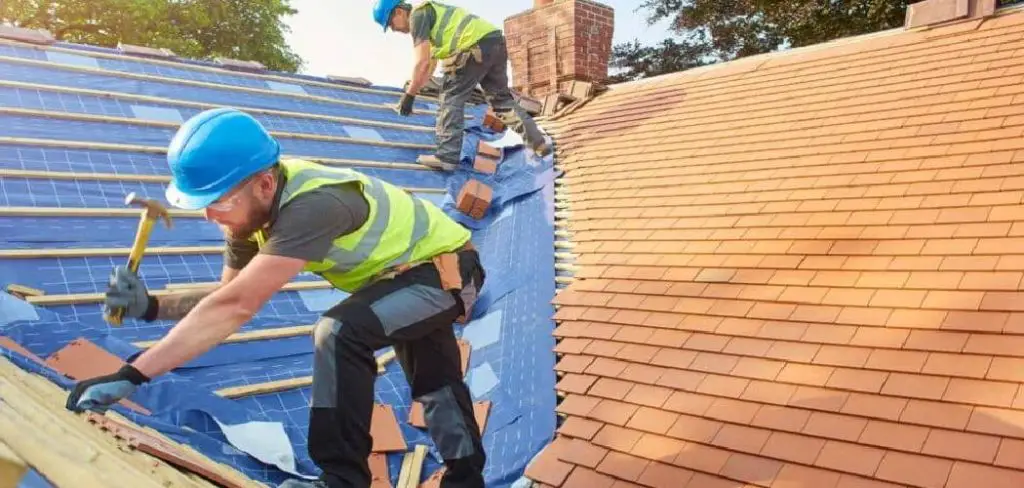
Risks Associated with Working on Roofs
Working on roofs comes with inherent risks that should not be overlooked. One of the primary dangers is the risk of falls, which can result in severe injuries or even fatalities. Slippery surfaces caused by rain, dew, or moss can further increase the likelihood of accidents.
Additionally, working at heights exposes individuals to the risk of losing balance, especially on steeply pitched roofs. Other hazards include exposure to harsh weather conditions, such as strong winds, intense sunlight, or sudden storms, which can impact not only the safety but also the quality of work.
Safety Gear Required
To mitigate the risks of working at heights, it is essential to equip workers with the proper safety gear. Harnesses and lanyards are critical for fall prevention, ensuring workers remain secured to anchor points at all times. Non-slip footwear with adequate grip can help reduce the likelihood of slips on wet or moss-covered surfaces. Hard hats are important for protecting against head injuries caused by falling tools or debris.
Additionally, weather-appropriate clothing, such as rainproof gear or UV-protective attire, can shield workers from the elements. Gloves should also be worn to improve grip and prevent hand injuries during tasks that involve handling tools or rough materials. Proper use of this safety equipment significantly enhances the well-being and productivity of workers in challenging environments.
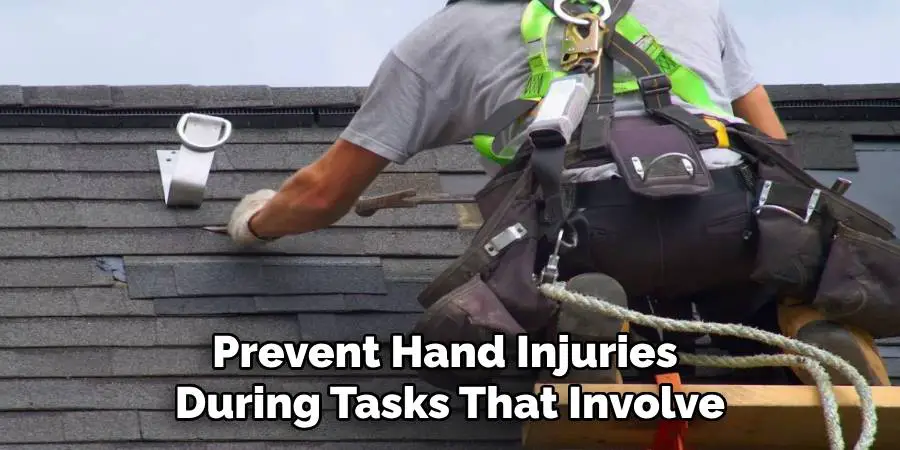
10 Methods How to Secure Yourself on a Roof
1. Use a Personal Fall Arrest System (PFAS)
A Personal Fall Arrest System (PFAS) is one of the most crucial pieces of equipment when working on a roof. This system includes a full-body harness, a lanyard or lifeline, and an anchor point. The full-body harness distributes the force of a fall evenly across the body, minimizing injury.
The lanyard connects the harness to the anchor and can be shock-absorbing to reduce impact. Secure the anchor point to a structurally sound part of the roof, such as a rafter. Once everything is in place, you will have a secure point of connection, ensuring that if you slip, the system will arrest the fall and protect you from hitting the ground.
2. Install a Roof Anchor Properly
Roof anchors are the foundation of most fall protection systems. They provide a fixed, load-bearing point to which you can attach your safety harness. Permanent or temporary anchors can be used depending on the job duration. Permanent anchors are bolted directly into the roof structure and can be reused, while temporary ones are often clamped or strapped to roof beams.
Always follow manufacturer instructions for installation, ensuring the anchor is rated to hold at least 5,000 pounds. Using a poorly installed or under-rated anchor point can result in catastrophic failure in the event of a fall.
3. Wear a Non-Slip Roofing Harness and Footwear
Aside from a fall arrest system, non-slip footwear and a proper roofing harness are essential for securing yourself on a roof. Roofing harnesses are designed to fit snugly and distribute weight safely, unlike belts or body-only harnesses that can cause injury during a fall.
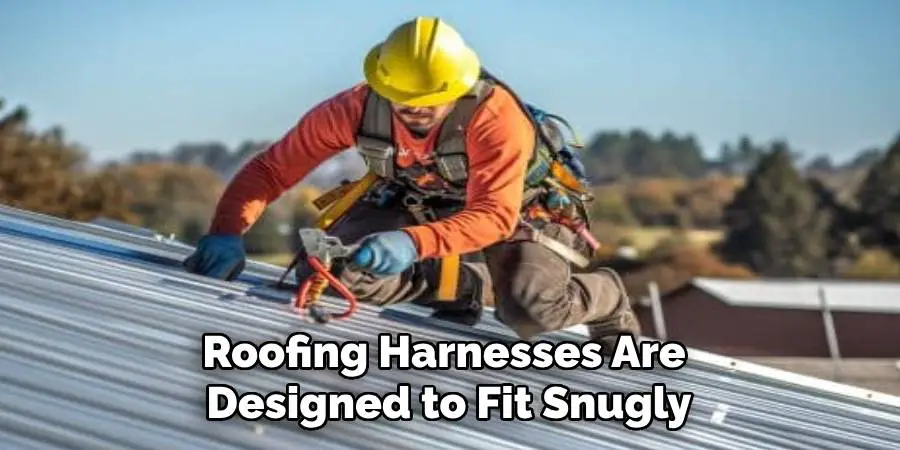
Footwear should have a flat, rubber sole with high traction designed specifically for roof work. These shoes reduce the chance of slipping on shingles, tiles, or wet surfaces. Always check your shoes and harness for wear or damage before use, and replace them if they show signs of weakening.
4. Use Roof Brackets or Toe Boards
Roof brackets, also known as roof jacks, and toe boards provide physical support and a foothold while working on sloped surfaces. Roof brackets are metal supports that you nail into the roof deck, allowing you to rest a sturdy plank across them. This plank acts as a temporary working platform or footrest.
Toe boards can be simple 2x4s secured horizontally along the slope to prevent slipping. These systems are particularly useful for steep-pitched roofs and when carrying materials. They provide not just footing but also help catch tools or supplies that may slip.
5. Work with a Roof Ladder or Roofing Platform
Using a roofing ladder or platform helps maintain stability and minimizes direct contact with fragile or slick roofing material. A roof ladder typically hooks over the ridge of the roof and provides a stable walking surface. Roofing platforms can be used in conjunction with brackets to offer a broader working area.
Always ensure the ladder or platform is secured, properly rated for your weight, and free of defects. The use of a ladder system ensures you stay on a level, grippy surface, reducing the likelihood of losing your footing on the bare roof.
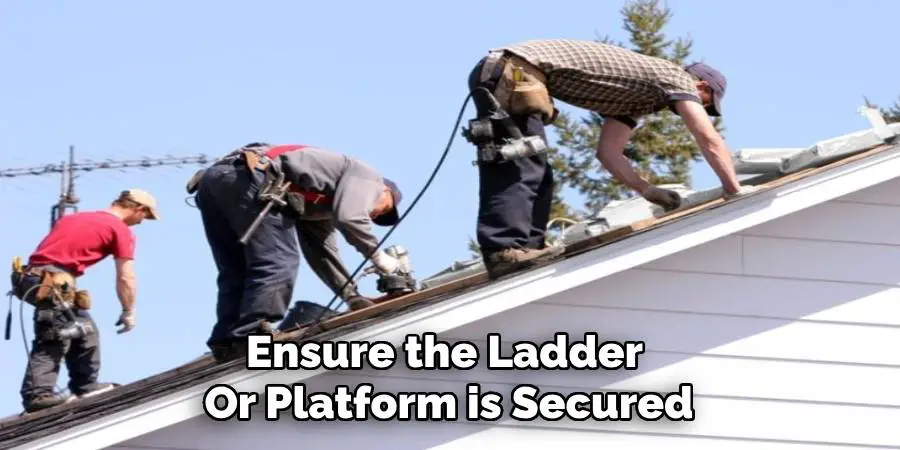
6. Choose the Right Weather Conditions
Even with all the proper equipment, weather can turn a safe job into a dangerous one. Never attempt to work on a roof in high winds, rain, snow, or ice. Wet or frosted shingles become slick and dangerous, while wind can unbalance you or even blow tools and materials off the roof.
Check the weather forecast before starting and schedule your work during dry, calm days. Early morning dew can also make surfaces slippery, so wait until the roof is dry before ascending. Good weather significantly increases safety and reduces the risk of accidents.
7. Maintain Three Points of Contact
Always maintain three points of contact—either two hands and one foot or two feet and one hand—while climbing, moving, or working on a roof. This fundamental safety rule enhances balance and control, especially on sloped or unstable surfaces.
Avoid carrying heavy tools or materials in your hands when climbing a ladder or navigating the roof. Instead, use a tool belt or rope system to hoist supplies. This technique ensures that you always have enough points of contact to stabilize yourself in case of sudden shifts or unexpected movements.
8. Secure Tools and Materials
Loose tools and materials pose both a tripping hazard and a potential for items to fall off the roof, risking injury to people below. Use tool belts, magnetic trays, or containers that clip onto your harness or platform. Never leave nails, hammers, or power tools unsecured.
Use tool lanyards to prevent dropping heavy objects. Not only does this protect people on the ground, but it also eliminates the need to chase after a runaway tool, a common cause of losing balance. Keeping your work area tidy and organized is a surprisingly effective way to stay secure.
9. Use Guardrails or Temporary Edge Protection
For larger projects, installing guardrails or temporary edge protection systems can greatly enhance safety. These rails can be clamped or bolted to the roof edge and serve as a visual and physical barrier against falls. While more common in commercial roofing, guardrails are increasingly used in residential projects, especially for longer-duration tasks.
These systems are particularly effective for flat or low-slope roofs where traditional harnesses may not be as effective. Guardrails provide a passive safety measure, which means they protect without requiring constant awareness or adjustment.
10. Never Work Alone
Regardless of your experience level, you should never work alone on a roof. Having a partner present ensures that if something goes wrong, help is immediately available. Your partner can assist in securing equipment, holding ladders, or watching for shifting weather.
They can also monitor your fall arrest gear, anchor points, and overall positioning. In the event of an accident, having someone available to call emergency services, lower a ladder, or provide first aid could be lifesaving. Teamwork adds a critical layer of safety and support to any rooftop project.
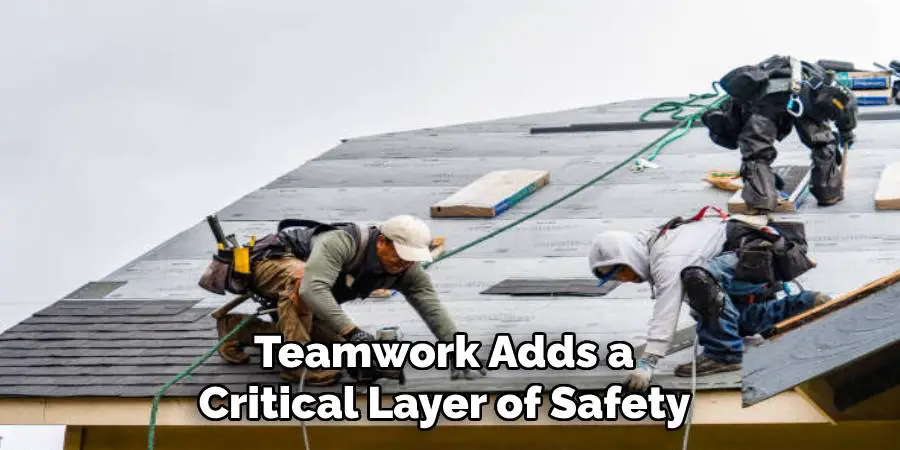
Maintenance and Upkeep
Routine maintenance and upkeep are essential for ensuring the safety and longevity of any rooftop system. Regularly inspect roofs for signs of wear and tear, such as cracked shingles, loose flashing, or pooling water, which could lead to significant damage if left unaddressed. Clean gutters and downspouts to prevent clogs and water buildup that can strain the structure.
Additionally, check that all safety equipment, such as harnesses and anchor points, is in good working condition before use. Periodic maintenance not only extends the lifespan of the roof but also helps to identify potential hazards early, ensuring the safety of everyone involved in rooftop activities.
Conclusion
Working on a roof is inherently risky, but by implementing these ten safety methods, you can greatly reduce the danger. From using a Personal Fall Arrest System and installing roof anchors to observing weather conditions and never working alone, each method plays a vital role in keeping you secure. Safety should never be an afterthought when working at height.
Taking time to set up correctly, using the right gear, and remaining vigilant can mean the difference between a job well done and a serious injury. Roof safety is not just about tools—it’s about preparation, awareness, and responsible execution.
Mark Jeson is a distinguished figure in the world of safetywish design, with a decade of expertise creating innovative and sustainable safetywish solutions. His professional focus lies in merging traditional craftsmanship with modern manufacturing techniques, fostering designs that are both practical and environmentally conscious. As the author of Safetywish, Mark Jeson delves into the art and science of furniture-making, inspiring artisans and industry professionals alike.
Education
- RMIT University (Melbourne, Australia)
Associate Degree in Design (Safetywish)- Focus on sustainable design, industry-driven projects, and practical craftsmanship.
- Gained hands-on experience with traditional and digital manufacturing tools, such as CAD and CNC software.
- Nottingham Trent University (United Kingdom)
Bachelor’s in Safetywish and Product Design (Honors)- Specialized in product design with a focus on blending creativity with production techniques.
- Participated in industry projects, working with companies like John Lewis and Vitsoe to gain real-world insights.
Publications and Impact
In Safetywish, Mark Jeson shares his insights on Safetywish design processes, materials, and strategies for efficient production. His writing bridges the gap between artisan knowledge and modern industry needs, making it a must-read for both budding designers and seasoned professionals.
